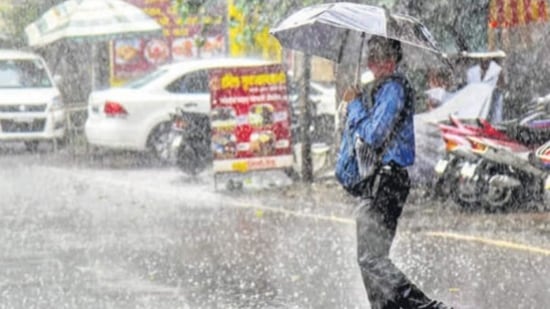Combating infectious diseases amidst India's monsoon
This article is authored by Angela Chaudhuri, chief catalyst, Swasti.
The monsoon always brings with it some or other health crisis. Each year sees a surge of infectious diseases that wreak havoc on our communities, often with devastating consequences. However, the fate of our nation's well-being need not be dictated by the whims of nature—through concerted efforts and collective community action, we can stem the tide of these preventable illnesses.

The numbers paint a sobering picture. According to the ministry of health and family welfare, diarrheal diseases account for over 9% of all deaths in children under the age of five in India, with an estimated 321,000 lives lost annually. A staggering 3.9 million Indians are hospitalised each year due to acute diarrheal episodes.
The situation becomes even more dire when we consider the rise of vector-borne diseases, such as dengue fever, which thrive in the standing water that accumulates during the monsoons. In 2021, India witnessed a 400% increase in dengue cases compared to the previous year, with over 157,000 reported infections and 301 fatalities. This is a trend that cannot be ignored, as these illnesses not only claim lives but also place an immense burden on our already strained health care system.
The root causes of these diseases are no secret. Inadequate access to clean water, poor sanitation infrastructure, and a lack of public awareness of preventive measures have all contributed to the perpetuation of these preventable diseases. But the time has come for our communities to take a stand and reclaim their health.
One of the most critical steps we must take is to ensure the provision of safe, potable water for all. According to the National Family Health Survey, only 60.9% of households in India have access to an improved drinking water source. This shortcoming not only fuels the spread of diarrheal diseases but also leaves our communities vulnerable to a host of other waterborne illnesses.
To address this, we must invest in robust water purification and distribution systems, making clean water accessible to even the most marginalised communities. The deployment of affordable, easy-to-use filtration devices and the widespread distribution of chlorination tablets can go a long way in safeguarding our water supply. Regular testing and monitoring of water sources must also be prioritised to swiftly identify and rectify any signs of contamination.
Equally crucial is the development and maintenance of proper sanitation infrastructure. The 2021 census data reveals that nearly 18% of Indian households still lack access to basic sanitation facilities. This not only perpetuates the spread of diarrheal diseases but also contributes to the proliferation of vector-borne illnesses, as stagnant water and improper waste management create ideal breeding grounds for mosquitoes.
By ensuring the construction and upkeep of well-designed latrines, septic tanks, and drainage systems, we can create a cleaner, healthier environment that denies these pathogens the conditions they need to thrive. Furthermore, public awareness campaigns on the importance of hand-washing and good hygiene practices can empower individuals to take an active role in preventing the spread of infectious diseases.
Addressing the threat of vector-borne illnesses, such as dengue, also requires a comprehensive, community-driven approach. The National Vector Borne Disease Control Programme reports that over 400,000 cases of dengue were recorded in India in 2022, a staggering 78% increase from the previous year. To curb this alarming trend, we must prioritise the elimination of mosquito breeding sites.
This entails regular cleaning and drainage of potential breeding grounds, such as abandoned containers, discarded tires, and clogged gutters. Community-wide efforts to remove standing water and apply larvicides can significantly reduce mosquito populations, effectively breaking the cycle of disease transmission. The use of mosquito-repellent nets, particularly for vulnerable groups, and the installation of window screens and door meshes can also provide an important layer of protection.
As we navigate the challenges posed by the monsoon season, it is vital that we approach the problem with a multifaceted strategy that addresses the root causes of infectious disease outbreaks. By investing in water and sanitation infrastructure, promoting public awareness, and fostering a sense of collective responsibility, we can empower our communities to safeguard their health and well-being.
The stakes are high, but the path forward is clear. Let us heed the lessons of the past and rise to the occasion, working together to protect our loved ones and build a future where the monsoons are no longer harbingers of disease, but harbingers of renewal and resilience.
This article is authored by Angela Chaudhuri, chief catalyst, Swasti.





